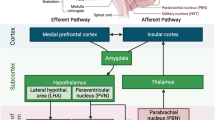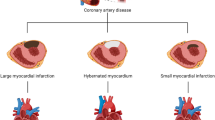Abstract.
Objective
Two types of hemodynamic overload, pressure and volume overload, result in morphologically distinct types of cardiac remodeling. We explored the possibility that distinct hemodynamic overload may differentially activate the signal transduction pathway.
Methods
Pressure and volume overload were induced by thoracic aortic banding and carotid–jugular shunt formation in rabbits, respectively. Phosphorylation activities of mitogen–activated protein (MAP) kinase families, Akt, and signal transducer and activator of transcription (STAT) 3 in the left ventricular myocardium were determined by Western blotting using phospho–specific antibodies and were compared between hypertrophied hearts by pressure and volume overload.
Results
Pressure and volume overload produced concentric and eccentric cardiac hypertrophy in rabbits, respectively. In pressure–overloaded hearts, extracellular signal–regulated kinase (ERK) 1/2, p38 MAP kinase, and STAT3 were transiently activated prior to hypertrophic changes. In contrast, activation of ERK1/2, but not p38 MAP kinase and STAT3, was observed only at 12 weeks after shunt surgery. Pressure overload evoked short and biphasic activation of Akt at 15 min and 1 day after aortic banding. In contrast, volume overload induced sustained activation of Akt from 1 day to 1 week. Concordant phosphorylation of downstream targets of Akt, glycogen synthase kinase–3β (GSK–3β) and p70 ribosomal S6 kinase (p70S6K), in response to Akt activation was observed at 15 min after pressure overload. However in volume–overloaded hearts, phosphorylation of GSK-3β and p70S6K was observed at 6 weeks and at 6 and 12 weeks, respectively, and was not coincident with Akt activation. These findings suggest that phosphorylation of GSK-3β and p70S6K is regulated by an alternative pathway other than Akt in volume–overloaded hearts.
Conclusion
Pressure and volume overload–induced cardiac hypertrophy is associated with distinct patterns of activation of signal transduction pathways. These data may suggest that stimulus–specific heterogeneity in the signaling pathway plays a role in determining the type of cardiac hypertrophy.
Similar content being viewed by others
References
Bogoyevitch MA (2000) Signaling via stress-activated mitogen-activated protein kinases in the cardiovascular system. Cardiovasc Res 45:826–842
Brower GL, Henegar JR, Janicki JS (1996) Temporal evaluation of left ventricular remodeling and function in rats with chronic volume overload. Am J Physiol 271:H2071–H2078
Burgering BM, Coffer PJ (1995) Protein kinase B (c-Akt) in phosphatidylinositol- 3-OH kinase signal transduction. Nature 376:599–602
Dufner A, Andjelkovic M, Burgering BM, Hemmings BA, Thomas G (1999) Protein kinase B localization and activation differentially affect S6 kinase 1 activity and eukaryotic translation initiation factor 4E-binding protein 1 phosphorylation. Mol Cell Biol 19:4525–4534
Epstein FH, Hunter JJ, Chien KR (1999) Signaling pathways for cardiac hypertrophy and failure. N Engl J Med 12:1276–1283
Franke TF, Yang SI, Chan TO, Datta K, Kazlauskas A, Morrison DK, Kaplan DR, Tsichlis PN (1995) The protein kinase encoded by the Akt proto-oncogene is a target of the PDGF-activated phosphoinositol 3-kinase. Cell 81:727–736
Hardt SE, Sadoshima J (2002) Glycogen synthase kinase-3β. A novel regulator of cardiac hypertrophy and development. Circ Res 90:1055–1063
Hirota H, Yoshida K, Kishimoto T, Taga T (1995) Continuous activation of gp130, a signal-transducing receptor component for interleukin 6-related cytokines, causes myocardial hypertrophy in mice. Proc Natl Acad Sci USA 92:4862–4866
Hirota H, Chen J, Betz UA, Rajewsky K, Gu Y, Ross J Jr, Mullar W, Chien KR (1999) Loss of gp130 cardiac muscle cell survival pathway is a critical event in the onset of heart failure during biomechanical stress. Cell 97:189–198
Matsui T, Li L, Wu JC, Cook SA, Nagoshi T, Picard MH, Liao R, Rosenzweig A (2002) Phenotypic spectrum caused by transgenic overexpression of activated Akt in the heart. J Biol Chem 277:22896–22901
Michel MC, Li Y, Heusch G (2001) Mitogen- activated protein kinases in the heart. Naunyn Schmiedebergs Arch Pharmacol 363:245–266
Miyamoto T, Takeishi Y, Takahashi H, Shishido T, Itoh M, Tomoike H, Kubota I (2003) Role of nitric oxide in cardiovascular remodeling induced by carotid arterio- venous shunt in rabbits. Jpn Heart J 44:127–137
Miyashita T, Takeishi Y, Takahashi H, Fujii S, Yoshimura T, Tomoike H, Kato S, Kubota I (2002) Comparison of nitric oxide production in response to carbachol between macrovascular and microvascular cardiac endothelial cells. Circ J 66:511–515
Molkentin JD, Olson EN (1999) Prevention of cardiac hypertrophy by calcineurin. Circ Res 84:623–632
Naqvi RU, Tweedie D, MacLeod KT (2001) Evidence for the action potential mediating the changes to contraction observed in cardiac hypertrophy in rabbits. Int J Cardiol 77:189–206
Ng DC, Long CS, Bogoyevitch MA (2001) A role for extracellular signal-regulated kinase and p38 mitogen-activated protein kinases in interleukin-1β-stimulated delayed signal transducer and activator of transcription 3 activation, atrial natriuretic factor expression, and cardiac myocyte morphology. J Biol Chem 276:29490–29498
Oikawa S, Imai M, Matsuo H (1985) Structure of dog and rabbit precursors of atrial natriuretic polypeptides. Deduced from nucleotide sequence of cloned cDNA. Biochem Biophys Res Commun 132:892–899
Ruwhof C, Laarse AVD (2000) Mechanical stress-induced cardiac hypertrophy: mechanisms and signal transduction pathways. Cardiovasc Res 47:23–37
Sadoshima J, Izumo S (1997) The cellular and molecular response of cardiac myocytes to mechanical stress. Annu Rev Physiol 59:551–571
Shima H, Pende M, Chen Y, Fumagalli S, Thomas G, Kozma SC (1998) Disruption of the p70S6K/p85S6K gene reveals a small mouse phenotype and a new functional S6 kinase. EMBO J 17:6649–6659
Shioi T, Kang PM, Douglas PS, Hampe J, Yballe CM, Lawitts J, Cantley LC, Izumo S (2000) The conserved phosphoinositide 3-kinase pathway determines heart size in mice. EMBO J 19:2537–2548
Shioi T, McMullen JR, Kang PM, Douglas PS, Obata T, Franke TF, Cantley LC, Izumo S (2002) Akt/protein kinase B promotes organ growth in transgenic mice. Mol Cell Biol 22:2799–2809
Takahashi N, Atsumi H, Takeishi Y, Tomoike H (2000) Alterations in the inotropic responses to forskolin and Ca2+ and reduced gene expression of Ca2+-signaling proteins induced by chronic volume overload in rabbits. Jpn Circ J 64:861–867
Takeishi Y, Abe J, Lee JD, Kawakatsu H, Walsh RA, Berk BC (1999) Differential regulation of p90 ribosomal S6 kinase and big mitogen-activated protein kinase-1 by ischemia/reperfusion and oxidative stress in perfused guinea pig hearts. Circ Res 85:1164–1172
Takeishi Y, Bhagwat A, Ball NA, Kirkpatrick DL, Periasamy M, Walsh RA (1999) Effect of angiotensin-converting enzyme inhibition on protein kinase C and SR proteins in heart failure. Am J Physiol 276:H53–H62
Takeishi Y, Jalili T, Ball NA, Walsh RA (1999) Responses of cardiac protein kinase C isoforms to distinct pathologic stimuli are differentially regulated. Circ Res 85:264–271
Takeishi Y, Ping P, Bolli R, Kirkpatrick DL, Hoit BD, Walsh RA (2000) Transgenic overexpression of constitutively active protein kinase C ε causes concentric cardiac hypertrophy. Circ Res 86:1218–1223
Takeishi Y, Huang Q, Abe J, Glassman M, Che W, Lee JD, Kawakatsu H, Lawrence EG, Hoit BD, Berk BC, Walsh RA (2001) Src and multiple MAP kinase activation in cardiac hypertrophy and congestive heart failure under chronic pressureoverload: Comparison with acute mechanical stretch. J Moll Cell Cardiol 33:1637–1648
Takeishi Y, Huang Q, Abe J, Che W, Lee JD, Kawakatsu H, Hoit BD, Berk BC, Walsh RA (2002) Activation of multiple mitogen-activated protein kinases and p90 ribosomal S6 kinase in failing human hearts with dilated cardiomyopathy. Cardiovasc Res 53:131–137
Tojo T, Tsunoda Y, Nakada S, Tomoike H (2000) Effects of long-term treatment with nonselective endothelin receptor antagonist, TAK-044, on remodeling of cardiovascular system with sustained volume overload. J Cardiovacs Pharmacol 35:777–785
Toker A (2002) Protein kinases as mediators of phosphoinositide 3-kinase signaling. Mol Pharmacol 57:652–658
Uozumi H, Hiroi Y, Zou Y, Takimoto E, Toko H, Niu P, Shimoyama M, Yazaki Y, Nagai R, Komuro I (2001) gp130 plays a critical role in pressure overload-induced cardiac hypertrophy. J Biol Chem 276:23115–23119
Author information
Authors and Affiliations
Corresponding author
Rights and permissions
About this article
Cite this article
Miyamoto, T., Takeishi, Y., Takahashi, H. et al. Activation of distinct signal transduction pathways in hypertrophied hearts by pressure and volume overload . Basic Res Cardiol 99, 328– 337 (2004). https://doi.org/10.1007/s00395-004-0482-7
Received:
Revised:
Accepted:
Published:
Issue Date:
DOI: https://doi.org/10.1007/s00395-004-0482-7




